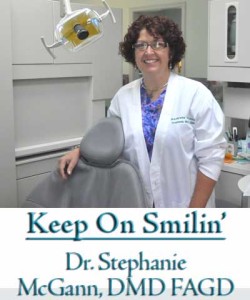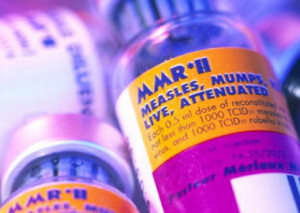A little prevention can go a long way and save money
By Dr. Stephanie McGann, DMD, FAGD, Columnist, The Times
 Dentistry today is full of ways to help children grow up without the dozens of cavities that so many of their parents had. One of the ways we work to prevent decay is by using pit and fissure sealants on the grooves of the back teeth. Over 40 years ago my parents enrolled me in a study to verify the effectiveness of dental pit and fissure sealants. Who knew back then I would go on to be a dentist? Sealants back then were much harder to place, and took time to harden. Although one result does not a study make, I can happily say they worked for me.
Dentistry today is full of ways to help children grow up without the dozens of cavities that so many of their parents had. One of the ways we work to prevent decay is by using pit and fissure sealants on the grooves of the back teeth. Over 40 years ago my parents enrolled me in a study to verify the effectiveness of dental pit and fissure sealants. Who knew back then I would go on to be a dentist? Sealants back then were much harder to place, and took time to harden. Although one result does not a study make, I can happily say they worked for me.
Back teeth, molars and bicuspids, have a very irregular surface. These hills, valleys and grooves are ideal places for decay. While good brushing technique can clear the majority of the plaque from these grooves, it can’t remove all of it. In fact, photos taken under extreme magnification show that the base of these grooves can be narrower than a single toothbrush bristle but plenty wide for an army of bacteria to set up base-camp.
Years ago, dentists would routinely drill out the entire groove and place a large filling in the tooth to prevent a small cavity from growing in these areas. This practice was called “extension for prevention” and it meant that the larger the filling the less tooth was left in person’s mouth to decay.
Today we can prevent much of this decay from starting by sealing the grooves with a protective coating before the decay occurs. We do this with dental sealants. While a pit and fissure sealant cannot protect a tooth against all decay it can dramatically reduce the likelihood of a cavity starting in the treated groove. Sealants have been used commonly for more than 30 years. Sealants are nearly invisible, can be applied without any anesthesia and prevent decay.
Dental sealants are usually applied soon after the permanent molar teeth erupt. The first permanent molars erupt around age 6 and the second set erupts around age 12. Sealants are non-invasive surface coatings that in Pennsylvania can be applied by a licensed dentist (DDS OR DMD) a registered dental hygienist (RDH) or a certified and licensed expanded function dental assistant (EFDA). How it works, First the teeth are cleaned with an abrasive slurry to remove any plaque in the area. The teeth are then washed with an etching gel that prepares the surface for the sealant but also removes any mucus or organic material in the groove. Then the tooth is dried and carefully isolated to prevent saliva from entering the groove while the sealant is brushed in place. After the sealant flows into the groove a bright light causes the material to set in just a few seconds. Excess sealant may be polished away if needed.
There are numerous companies that manufacture FDA approved dental sealant materials. Most are white or clear in color. I personally prefer the white ones because it is easier to identify the material during a regular check-up exam. Sealants normally last 5-10 years and can be reapplied if necessary.
I am often asked, if my child gets fluoride do they need sealants too? Yes, fluoride makes the surface of teeth harder but sealants actually form a barrier and fill in the deepest grooves that cannot be cleaned with a toothbrush. They are meant to work together. Sometimes we need to consider the costs. The cost of sealants for every tooth with grooves is often less than a single filling or even the deductible for a filling. So whether or not there are insurance benefits, sealants save money for everyone.
Of particular interest to me is the recommendation by the U. S. Department of Health and Human Services regarding sealant application for adults. Many individuals, who because of increased use of mouth drying medications or lack of dexterity have become more cavity-prone over time. It is recommended that these patients should have sealants placed on teeth that have never been decayed or restored. I have seen families struggle when an aging parent has difficulty getting to the dentist, as a profession it is now our job to be proactive and practice more aggressive prevention for our seniors.
Dental sealants are an essential and regular part of a preventive dentistry program. If there is someone you know who might benefit from dental sealants, please talk with your dentist and find out if they are right for you.
Dr. Stephanie McGann is a resident of the Unionville area and along with her partner, Dr. Marie Scott, operates The Brandywine Smile Center, a family-friendly dental practice in Concordville. She is a Fellow of the Academy of General Dentistry. The Brandywine Smile Center is pleased to be sponsoring the 4th annual Trick or Treat for Troops. Learn more at http://brandywinesmilecenter.com/trick-or-treat-for-troops






